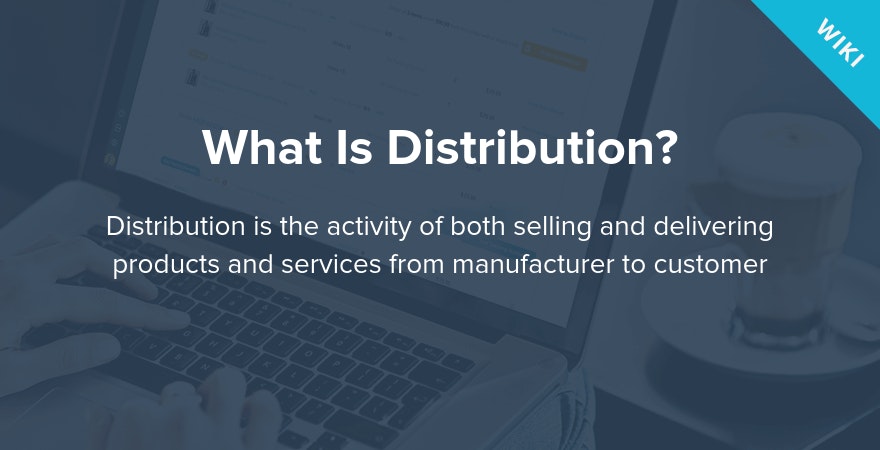
Distribution



What Is Distribution?
Distribution is the activity of both selling and delivering products and services from manufacturer to customer. This can also be called product distribution. As businesses become more global it becomes important to improve distribution to ensure that customers and all members of the distribution channel are happy. Depending on the length of the distribution channel there can be many people involved in distribution.
What Is the Importance of Distribution?
Distribution is an important element of operations as, without a role that tracks and improves the relationship between manufacturers and customers, a company cannot ensure the best possible service. If bottlenecks happen in distribution, deliveries fall short, customers, retailers and suppliers get angry, and trust is lost. For product distribution to be truly successful a continuous feedback loop needs to be implemented to ensure everyone is happy with the process and that any improvements that can be made, are made.
In terms of dropshipping and customers buying items online, merchants and customers do not get to try the product before they buy so they trust that the item will arrive just like in the pictures and descriptions. This means that the distribution channel needs to be efficient at providing responses and comments across the whole channel.
→ Click Here to Launch Your Online Business with Shopify
What Is Distribution Management?
Distribution management refers to the main activities of distributing a product, which includes:
-
- Packaging: Providing adequate packaging for a product so it can be transported safely.
- Inventory Management: Maintaining a good level of inventory is hugely important to distribution. Management of inventory is one of the main responsibilities of distribution management.
- Order Processing: Once an order comes in from a customer, distribution management needs to plan for the delivery. This involves collecting the stock, loading it, and delivering it in a timely manner. Approval needs to be sent and invoicing done for this step to be valid.
- Logistics: Mode of transport is important to consider for all orders. If they require overseas shipping there must be agreements in place for permits to be approved quickly. Loading and handling need to be decided so that all equipment that could be needed is available onsite.
- Communication: Clear communication is needed both on and off-site at distribution centers. This is to ensure that the correct products are shipped and customers know when they will receive their items. If a shipment is delayed, distribution management needs to notify all interested parties immediately.
What Is E-Distribution?
E-distribution is the electronic product distribution of things like software and digital downloads. Such items include video games, computer software, movies, music, and ebooks. Due to the ease of purchase and the immediate receipt of purchase this industry is fast-moving and highly profitable. Different from physical distribution, e-distribution has to be immediate for it to be successful. Customers who do not achieve a download link within minutes of purchase will reach out to suppliers to receive this.
The downside of this form of distribution is that it requires a constant internet connection to receive the goods and also file formats may lead to corrupt or usable downloads that cause dissatisfaction among customers.
What Are the Differences Between Distributor vs Wholesaler?
There tends to be a bit of confusion between what a distributor is and how they differ from a wholesaler. In general, a distributor works closely with a manufacturer in order to sell more goods and gain better visibility on these goods. Distributors normally will find wholesalers who will resale their products. A wholesaler works more closely with retailers to match their needs through buying products in bulk at a discount. Therefore distribution is an important part of the distribution channel as it acts as the medium between the manufacturer and their customers.
Distribution Example Through Dropshipping
At Oberlo we strive to operate a product distribution channel that everyone profits from. Manufacturers, suppliers, and distributors can advertise their inventory in our marketplace which is available to all merchants to browse and choose from. Merchants then choose the products they want to sell in their online stores and add them accordingly. Once a customer purchases a product from the online store the merchant is notified and an order is placed with the distributor who arranges for shipment from their facilities. This process is effortless with Oberlo as we listen to our merchants and distributors to make sure they are happy with the process. This also means we can improve our operations through fostering creativity and problem solving with our partners.
What Is Marketing Distribution?
As slightly different from e-distribution and supply chain distribution, marketing distribution is how the marketing department makes products and services available to potential customers. Availability can be through the manufacturer, supplier, distributor, retailer, or wholesaler. From the perspective of the 4P’s of the marketing mix, marketing distribution can be slotted into the place category. Examples of marketing distribution channels include:
- A distributor can be employed by a manufacturer to reach out to suppliers or retailers to purchase their product,
- A supplier can make their stock available on a marketplace for merchants to find and sell,
- A retailer could stock a wide array of products strategically placed across their store to entice customers to buy,
- A wholesaler can build a website so customers can order products straight from them.


